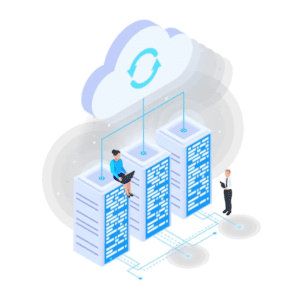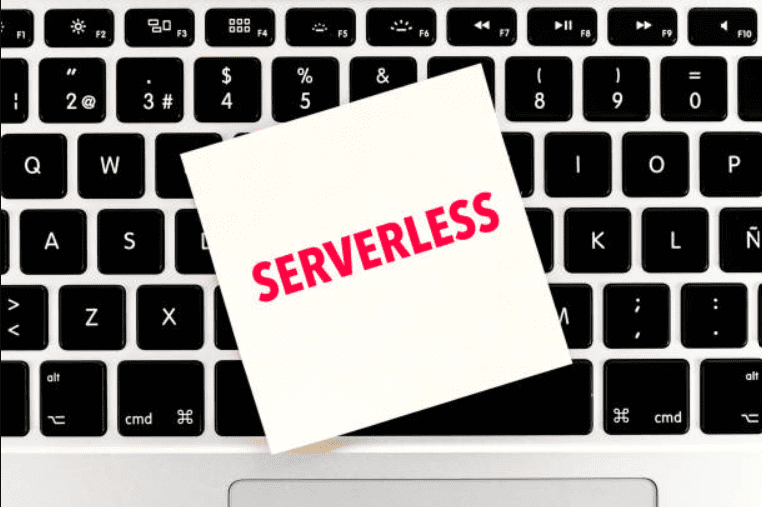Exploring The Power of Serverless Architecture in Cloud Computing
Lately, there's been a lot of talk about "serverless computing" in the computer industry. It's a cool new concept. Through this, programmers focus on coding without worrying about the technical stuff underneath. It's great for businesses and developers. It can adapt to their needs and save money. Research says the serverless computing industry will grow significantly, with a projected value of \$36.84 billion by 2028.
In this article, we'll explain what serverless computing is, talk about its benefits, and see how it can change software development in the future. It's a fun and exciting topic to explore!
Understanding the term “Serverless Computing”#
Serverless computing is a way of developing and deploying applications that eliminate the need for developers to worry about server management. In traditional cloud computing, developers must manage their applications' server infrastructure. But in serverless computing, the cloud management platform handles managing the infrastructure. This allows developers to focus on creating and launching their software without the burden of server setup and maintenance.

In a similar vein, Kubernetes simplifies robust distributed applications by combining modern container technology and Kubernetes. Kubernetes enables autoscaling, automatic failover, and resource management automation through deployment patterns and APIs. Though some infrastructure management is necessary, combining "serverless" and "Kubernetes" may seem counterintuitive.
Critical Components of Serverless Computing#
Several fundamental components of serverless architecture provide a streamlined and scalable environment for app development and deployment. Let's analyze these vital components in further detail:
Function as a Service (FaaS):#
Functions as a Service is the basic concept behind serverless cloud computing. FaaS allows its users to generate functions that may be executed independently and carry out specific tasks or procedures. The cloud service takes care of processing and scaling for these procedures when triggered by events or requests. With FaaS, Cloud DevOps don't need to worry about the underlying infrastructure, so they can concentrate on building code for particular tasks.
Event Sources and Triggers:#
In serverless computing, events are like triggers that make functions run. Many different things can cause events, like when people do something, when files are uploaded, or when databases are updated. These events can make tasks happen when certain conditions are met. It's like having a signal that tells the functions to start working.
Event-driven architecture is a big part of serverless computing. It helps create applications that can adapt and grow easily. They can quickly respond to what's going on around them. It's like having a super-intelligent system that knows exactly when to do things.
Cloud Provider Infrastructure:#

Cloud management platforms are responsible for maintaining the necessary hardware to make serverless computing work. The cloud service handles server management, network configuration, and resource allocation so that developers may concentrate on creating their applications. Each cloud management platform has a unique architecture and set of services regarding serverless computing. This comprises the compute operating configurations, the automated scaling techniques, and the event handling mechanisms.
Function Runtime Environment:#
The function runtime environment is where the cloud management platform executes serverless functions. It is equipped with all the necessary tools, files, and references to ensure the smooth running of the function code. The running context supports many programming languages, allowing developers to create methods in the language of their choice. A cloud service handles the whole lifecycle of these operational settings. This involves increasing capacity and adding more resources as required.
Developer Tools and SDKs:#
Cloud providers are like helpful friends to developers when making and launching serverless applications. They offer unique tools and software development kits (SDKs) that make things easier. With these tools, developers can test their code, fix issues, automate the release process, and track how things are going. It's like having a magic toolbox that helps them do their work smoothly.
SDKs are like secret codes that help developers work with the serverless platform. They make it easy to use its services and APIs. They also help developers connect with other services, manage authentication, and access different resources in the cloud. It's like having a unique guidebook that shows them the way.
Service Integration:#
Serverless computing platforms offer a plethora of pre-built features and interfaces that developers can take advantage of. These include databases, storage systems, message queues, authorization and security systems, machine learning services, etc. Leveraging these services eliminates the need to build everything from scratch when implementing new application features. By utilizing these pre-existing services, Cloud DevOps can harness their capabilities to enhance the core business operations of their applications.
Monitoring and Logging:#
Cloud DevOps may monitor the operation and behavior of their functions using the built-in monitoring and logging features of serverless platforms. Processing times, resource consumption, error rates, and other metrics are all easily accessible with the help of these instruments. Cloud DevOps may identify slow spots by monitoring and recording data, enhancing their operations, and addressing issues. These systems often integrate with third-party monitoring and logging services to round out the picture of an application's health and performance.
With this knowledge, developers can harness the potential of serverless architecture to create applications that are flexible, cost-effective, and responsive to changes. Each component contributes to the overall efficiency and scalability of the architecture, simplifies the development process, and ensures the proper execution and management of serverless functions.
Advantages of Serverless Computing#

There are several advantages to serverless computing for organizations and developers.
Reduced Infrastructure Management:#
Serverless architecture or computing eliminates the need for developers to handle servers, storage, and networking.
Reduced Costs:#
Serverless computing reduces expenses by charging customers only for the resources they consume. Companies may be able to save a lot of money.
Improved Scalability:#
With serverless computing, applications may grow autonomously in response to user demand. This can enhance performance and mitigate downtime during high use.
Faster Time to Market:#
Serverless computing accelerates time to market. It allows developers to focus on their application's core functionality.
Disadvantages of Serverless Computing#
There are several downsides to serverless computing despite its advantages.
Data Shipping Architecture:#
The Data Shipping Architecture is different from how serverless computing usually works. In serverless computing, we try to keep computations and data together in one place. But with the Data Shipping Architecture, we don't do that. Because serverless computing is unpredictable, it's not always possible to have computations and data in the same location.
This means that much data must be moved over the network, which can slow down the program. It's like constantly transferring data between different places, which can affect the program's speed.
No Concept of State:#
Since there is no "state" in serverless computing, data accessible to multiple processes must be kept in some central location. However, this causes a large number of database calls. This can harm performance. Basic memory read and write operations are transformed into database I/O operations.
Limited Execution Duration:#
Currently, there is a fixed length limit for serverless operations. Although this is not an issue at the core of serverless computing, it does limit the types of applications that may be run using a serverless architecture.
Conclusion#
Serverless computing saves money, so it will keep growing. That's why we must change how we develop applications and products to include serverless computing. We should consider how to use it to make applications work better, cost less, and handle more users. When we plan, we need to think about the good and bad parts of serverless computing. If we use serverless computing, we can stay up-to-date with technology and strengthen our market position. You can also streamline distributed applications with Serverless Kubernetes. Serverless Kubernetes is a powerful combination of container technology and Kubernetes.
You can also experience the power of cloud hosting with Nife to upgrade your website today.